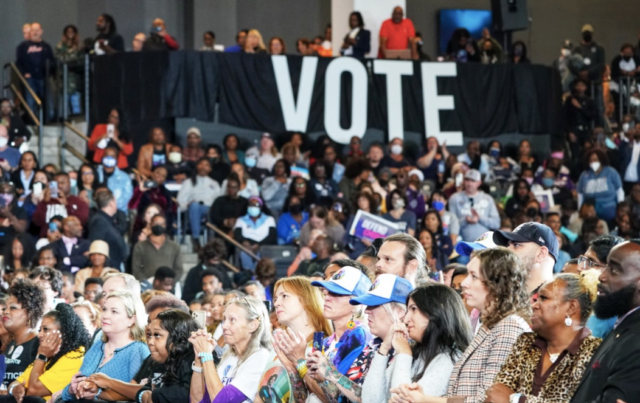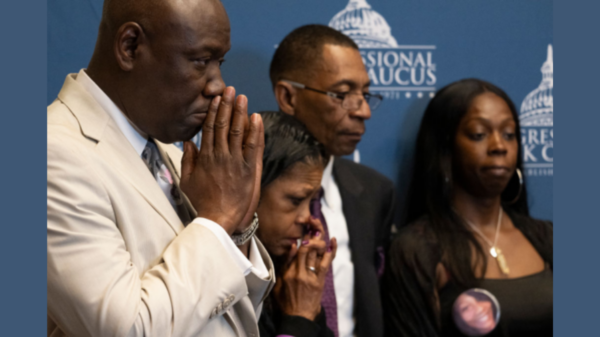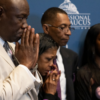By Opinion by Joshua A. Douglas

In one of the most surprising US Supreme Court decisions in recent memory, a majority of the justices refused last week to gut the protections in the Voting Rights Act, one of the most important civil rights laws in history. The decision was unexpected given that the court’s conservative majority has undermined voting rights in numerous decisions before.
The case involved a congressional redistricting map of Alabama that harmed Black voters by drawing districts that diluted the strength of their voting power. After the 2020 Census, Alabama adopted the map, which split up communities of Black voters so that they were a majority in only one of the seven districts, even though they constitute about 27% of the state’s total population.
While the Supreme Court’s decision was a welcome surprise for many, the celebration of the court’s refusal to adopt Alabama’s radical argument to uphold the map despite its racial implications underscores how low the bar has become. The court did not offer a robust theory for expanding political participation or enhancing equality. It did not require states to stop partisan gerrymandering or prohibit voter suppression. It simply let the Voting Rights Act live for another day.
In a series of recent cases, the court has unduly deferred to state legislatures in its rules on how to run elections. It essentially blessed strict voter ID laws and partisan gerrymandering. It effectively took away the preclearance mechanism of the Voting Rights Act — which required states with a history of discrimination to seek preapproval of voting changes from a federal court or the Department of Justice before the voting rules could go into effect — in the infamous Shelby County decision 10 years ago. In 2021, the court curtailed the reach of Section 2 of the Voting Rights Act, which prohibits a voting law that has the effect of racial discrimination, by making up “guideposts” a plaintiff must satisfy to bring a successful claim. Most commentators therefore thought the justices would similarly narrow that protection of the Voting Rights Act this year.
In Thursday’s decision, the justices — with Chief Justice John Roberts and Justice Brett Kavanaugh joining the three more liberal justices in the 5–4 ruling — rejected Alabama’s argument. The court instead faithfully applied its precedent, including a case from 1986 that sets out a three-part test for these cases. Alabama’s argument would have required the court to abandon that case.
As Chief Justice Roberts noted for the majority, “The heart of these cases is not about the law as it exists. It is about Alabama’s attempt to remake our §2 (Section 2) jurisprudence anew.” Although it’s shocking that a conservative majority did not once again rewrite the Voting Rights Act to narrow its protections, that fact should not absolve the court of the harm it has created in its voting rights jurisprudence.
First, the court allowed this illegal Alabama map to go into effect for the 2022 midterm election, meaning that Alabama voters elected their congressional representatives using unlawful maps. The lower court had struck down the map in January 2022, ordering the state to redraw a map with two majority-Black districts.
Just two weeks later, the Supreme Court put that lower court opinion on hold, allowing Alabama to use the map, even though there was plenty of time left before the election to draw a new one. That decision had a tangible effect: Republicans won six of the seven seats — all but the one majority-Black district.
The same thing happened in Louisiana: the Republican-controlled legislature drew a congressional map in which Black voters were a majority in only one district, though a fair map would have included two. A lower court ruled that the map likely violated the Voting Rights Act but the Supreme Court put that order on hold last summer as well. Republicans ended up winning five of the six districts in Louisiana in 2022.
Similarly, a federal court in Georgia let the state use a map in 2022 that it said was likely unlawful because it diluted the strength of minority voters, citing how the Supreme Court had allowed Alabama to adopt the map for that year. Thus, there were at least three states that used maps in 2022 that courts had found likely unlawful under the Voting Rights Act. Republicans won a majority in the House by just five seats.
Second, the court’s ultimate decision in the Alabama case, to reject an argument that would narrow the protection of the Voting Rights Act, essentially maintains the status quo. Voting rights advocates successfully played defense against an attack on that law.
But the court’s decision does not meaningfully advance the cause of voting rights to require greater inclusion or ease of voter access. It did not lay the groundwork to overrule its prior cases that had essentially removed the preclearance mechanism of the Voting Rights Act or narrowly construed Section 2 of the Act as applied to voting rules (as opposed to redistricting disputes). Nor did it adopt a robust theory of voting rights that prioritizes greater inclusivity and equality.
Justice Kavanaugh, who provided the fifth vote in favor of the Voting Rights Act, noted in a concurring opinion that he might consider a future argument — propounded by Justice Clarence Thomas’s dissent – that “the authority to conduct race-based redistricting cannot extend indefinitely into the future.” The court’s decision therefore might be just a temporary reprieve.
To be sure, the Supreme Court’s decision is good news: the Voting Rights Act will continue to protect minority voters in redistricting cases, forbidding states from drawing unfair maps that make it harder for minority voters to come together to elect their preferred candidates. Additional litigation may require fairer maps in several states for the 2024 election and beyond. But it’s good news only because the court did not do what many people had feared and harm voters even more.
We should expect more from the Supreme Court than a simple refusal to go along with an argument that would hurt minority voters and the cause of equality. Playing defense against further attacks on voting rights isn’t enough. The court should adopt a theory of robust voter participation to pave the way for universal democratic participation and uphold the right to vote as the most fundamental right in our democracy.









You must be logged in to post a comment Login